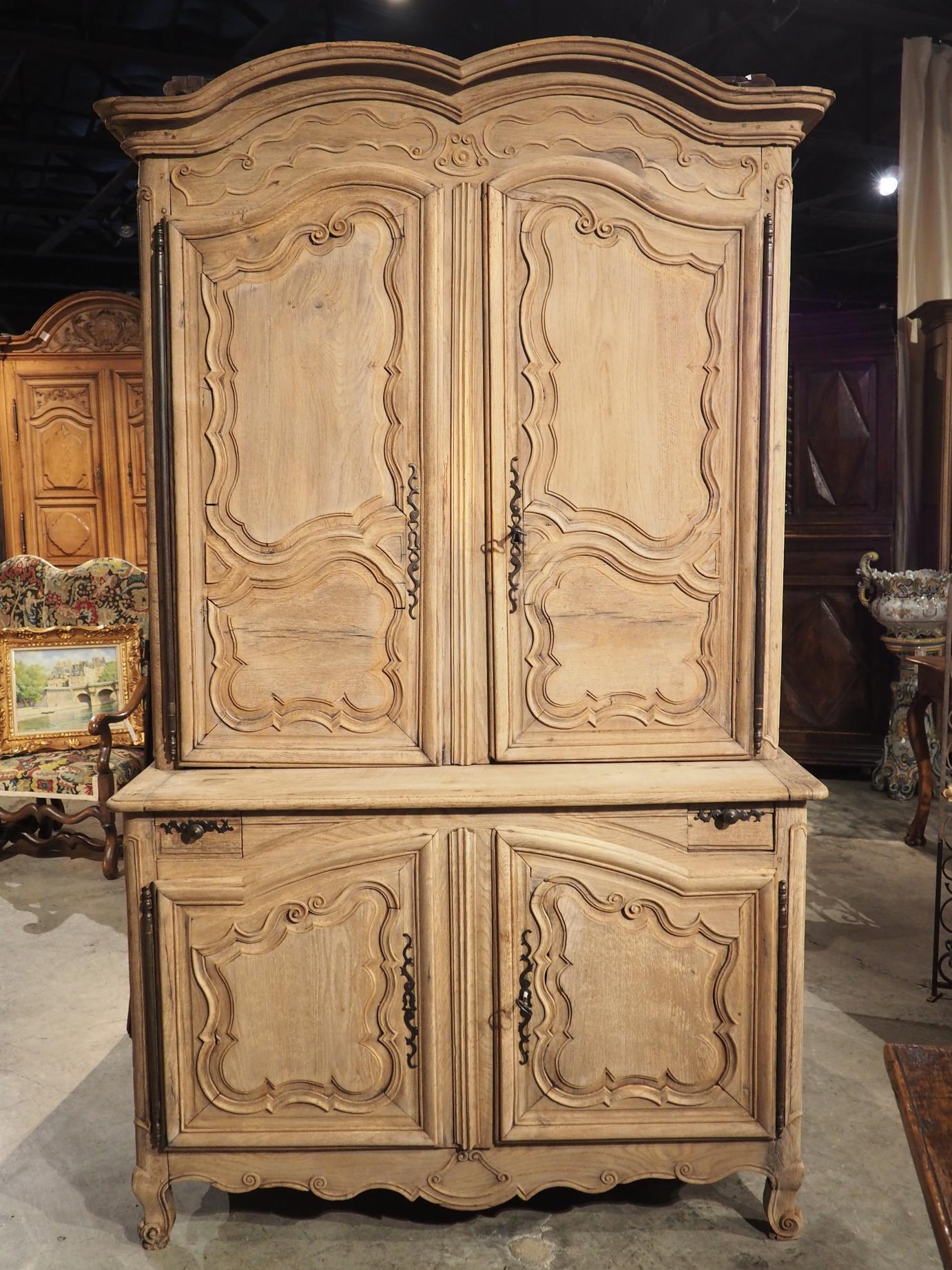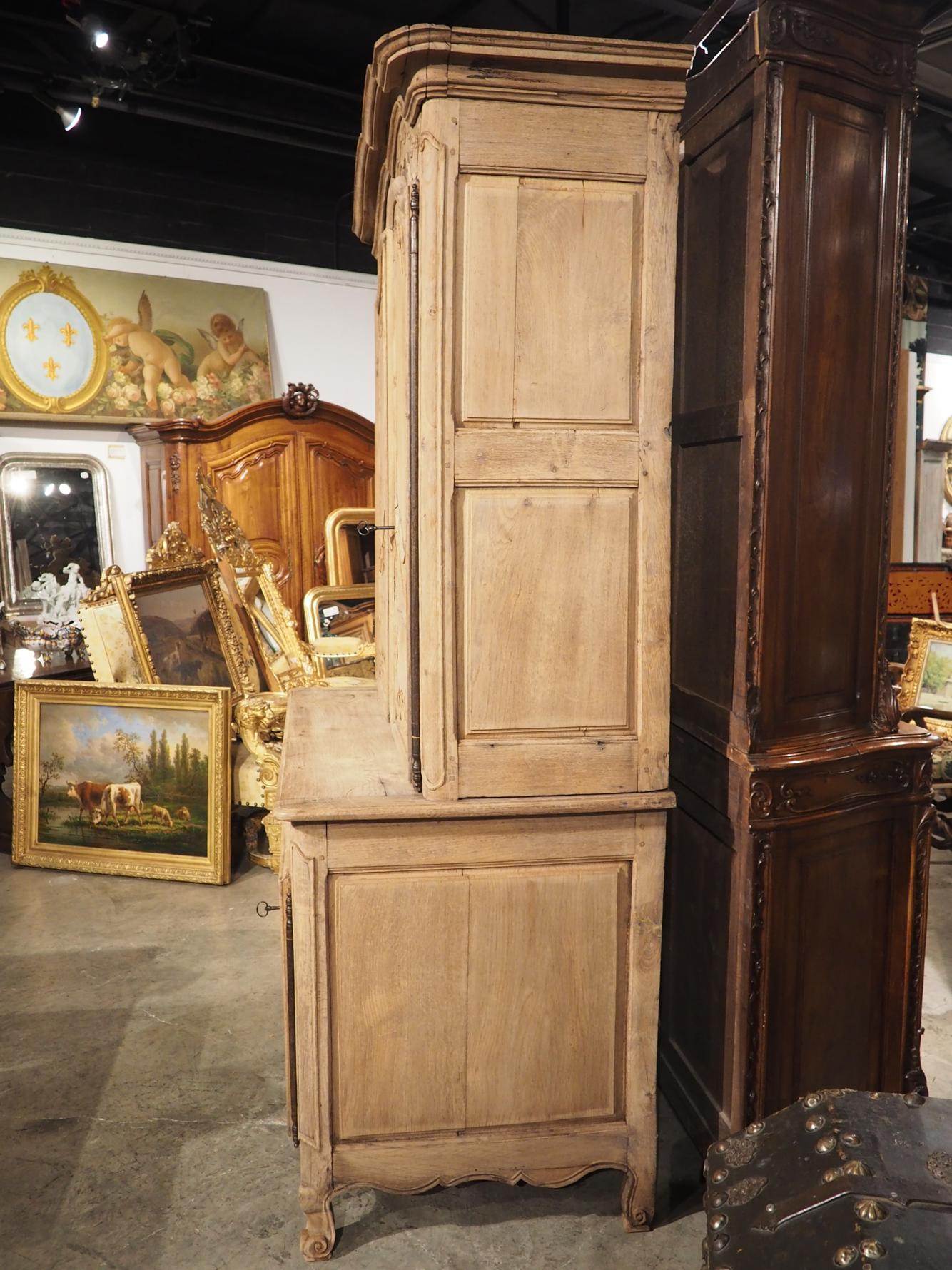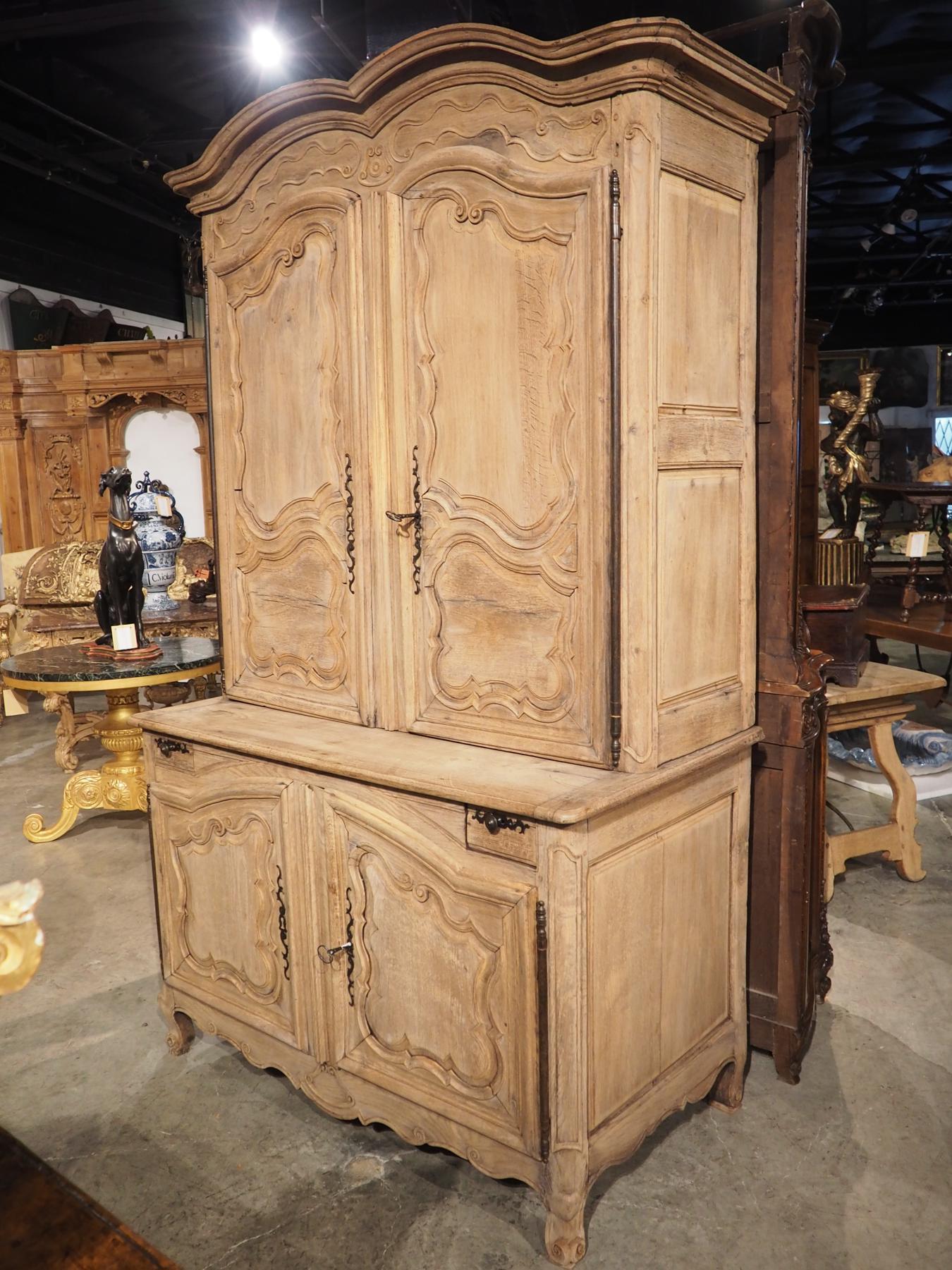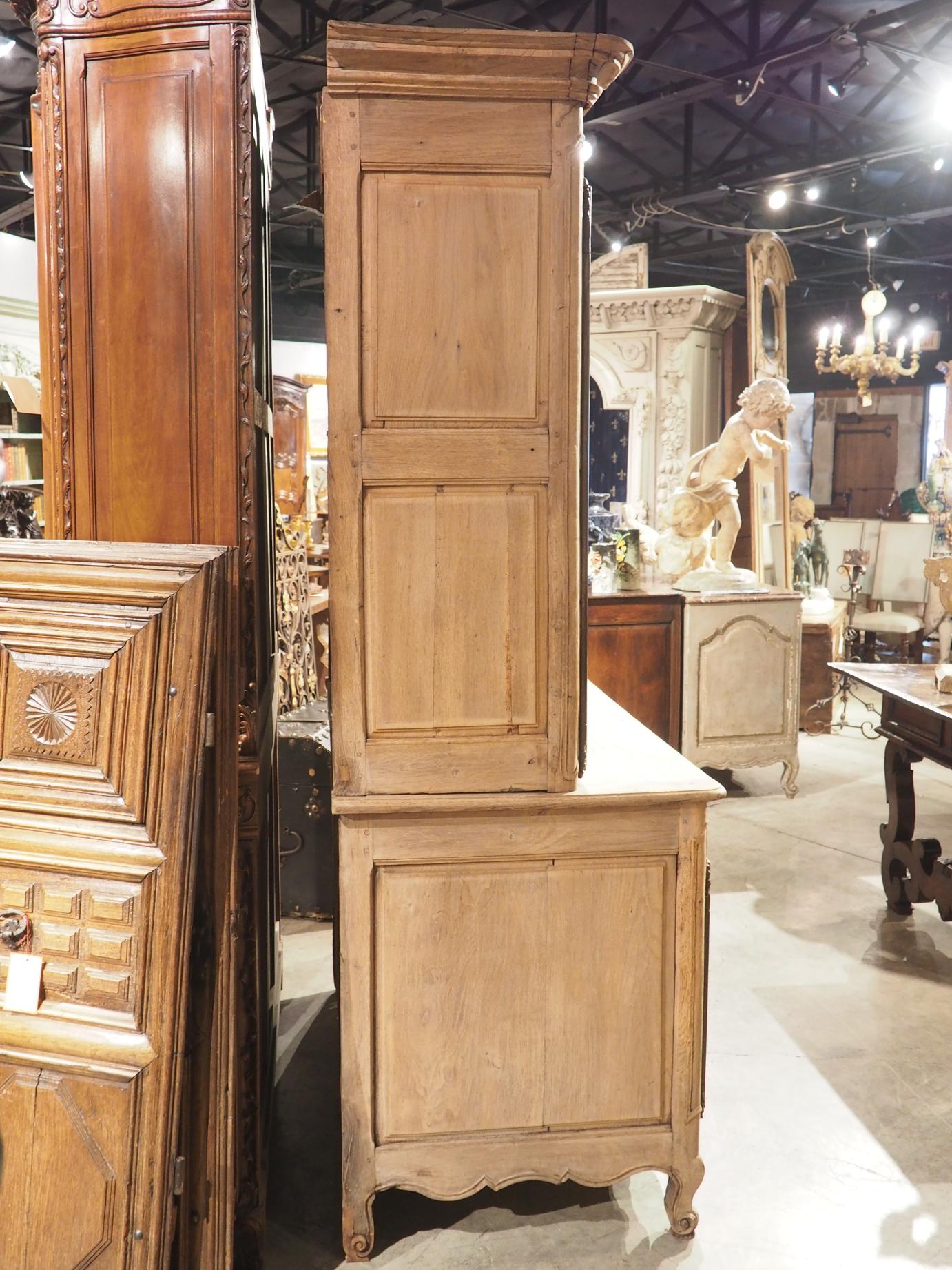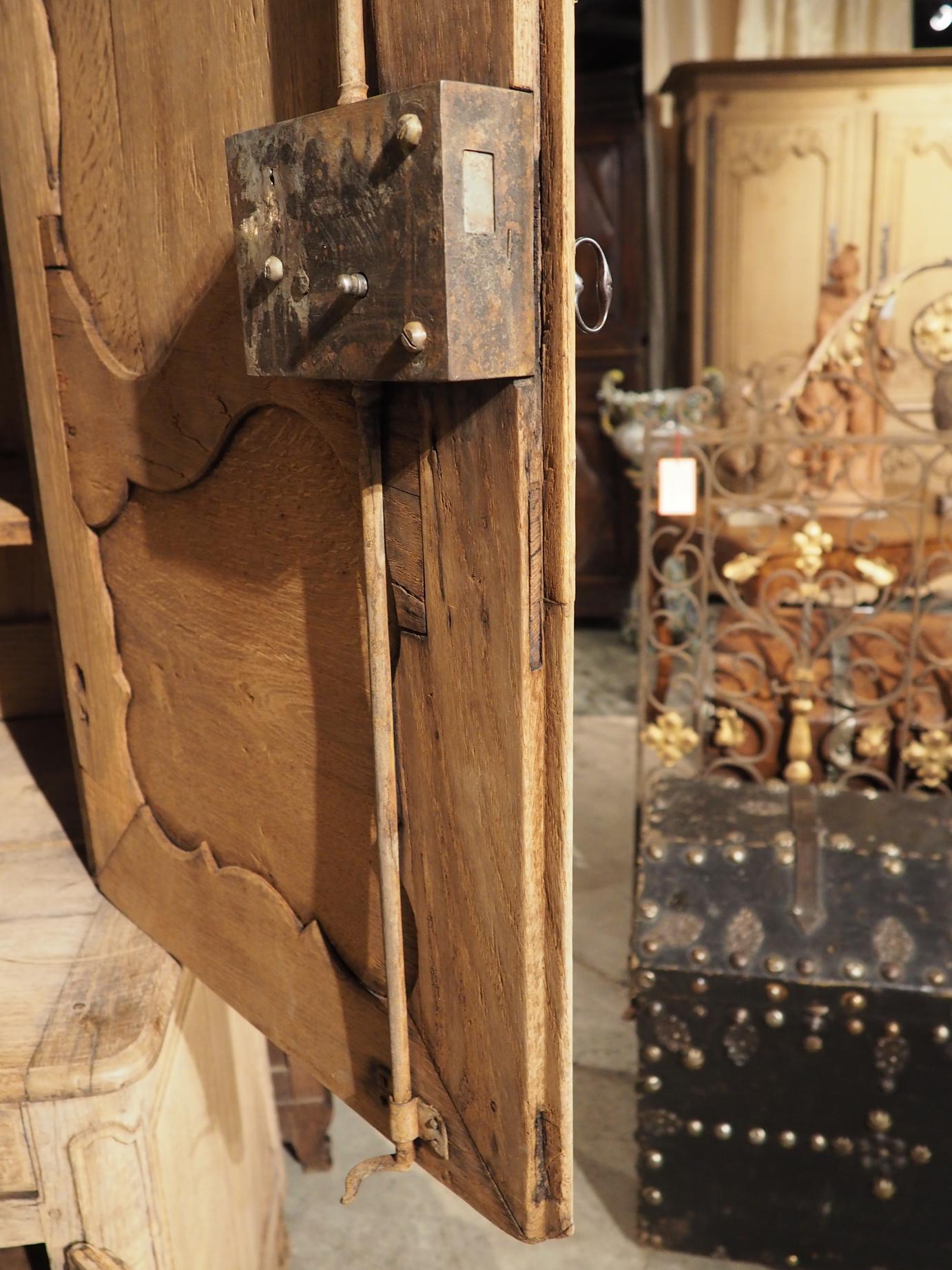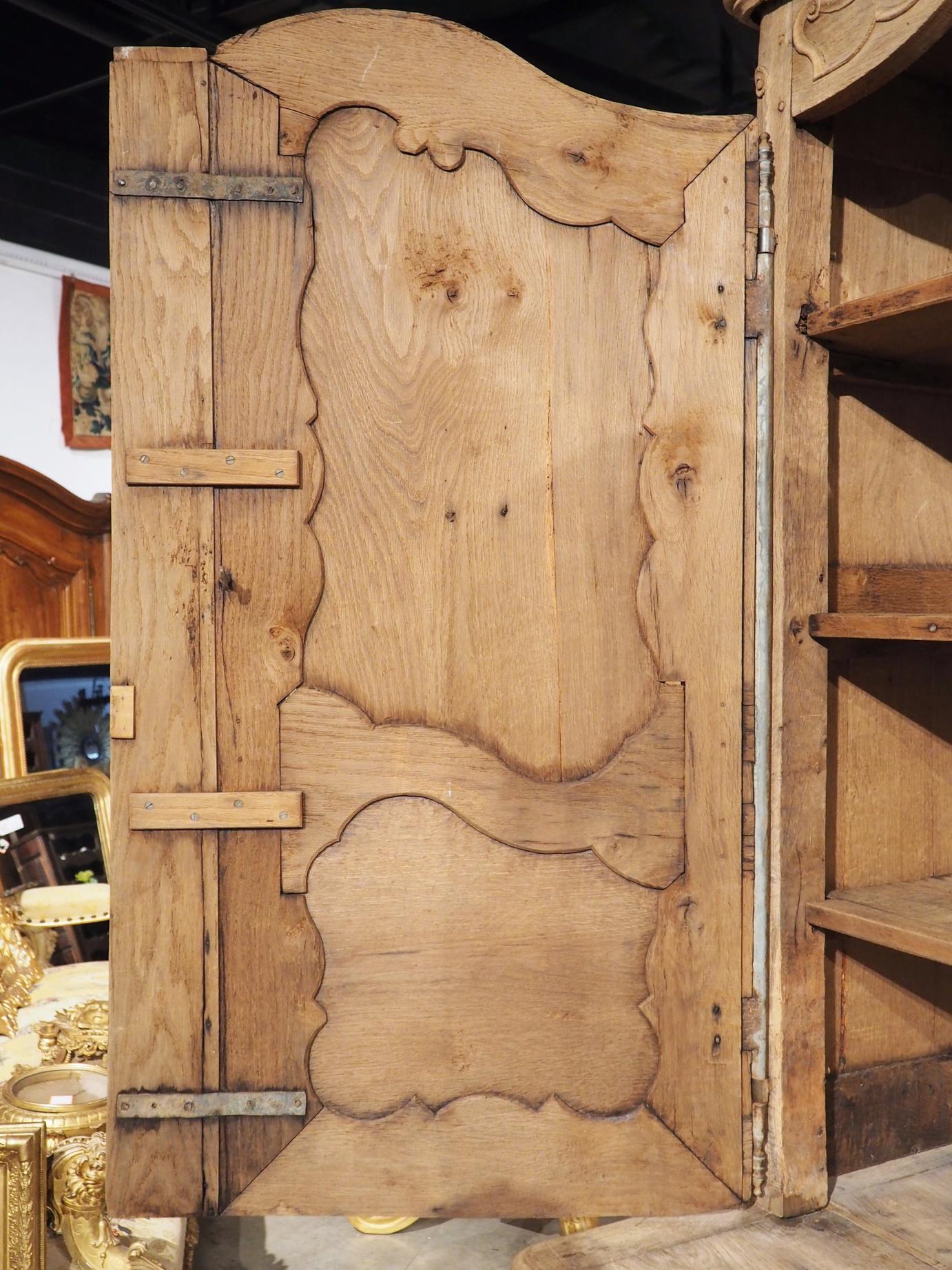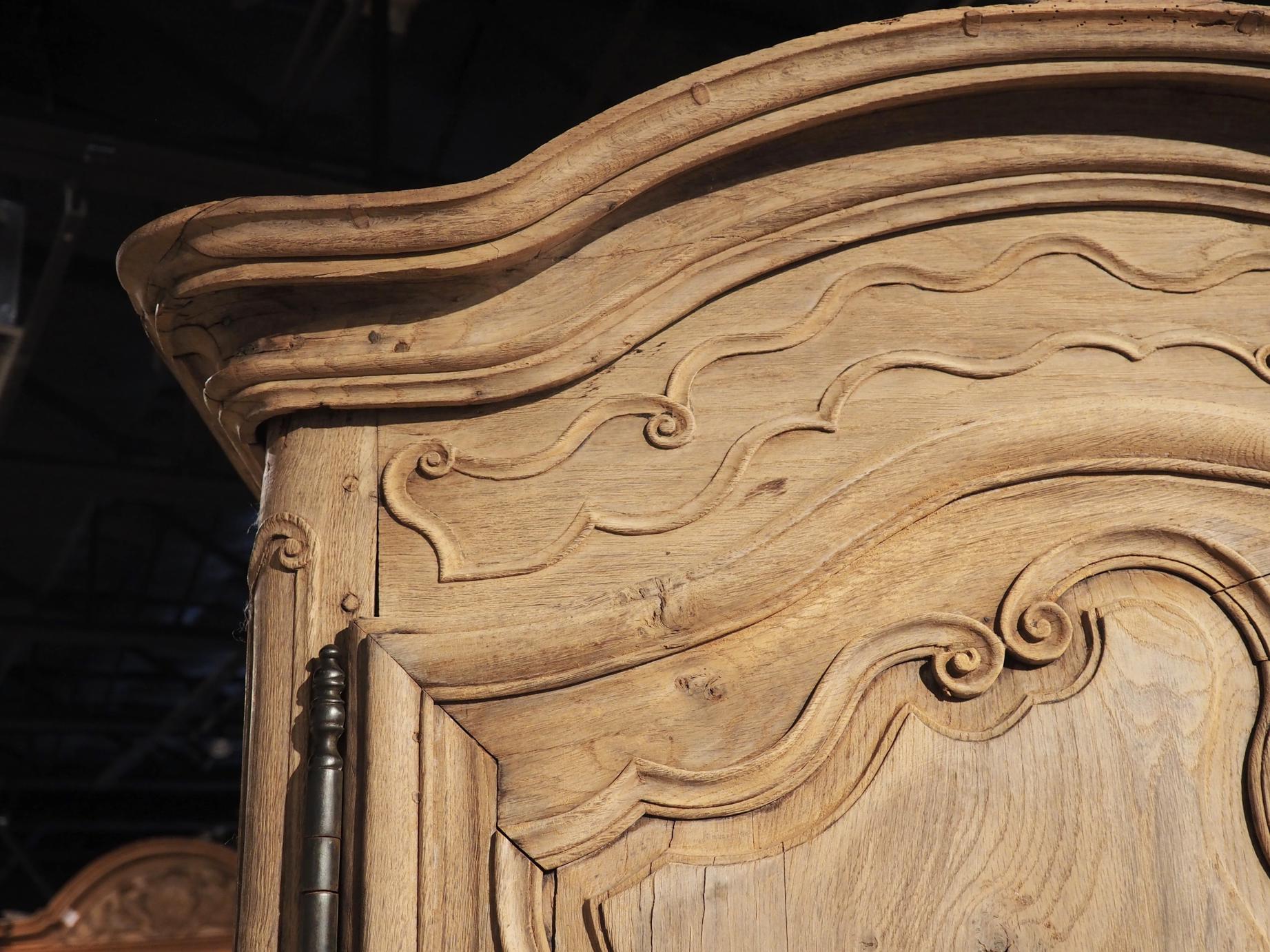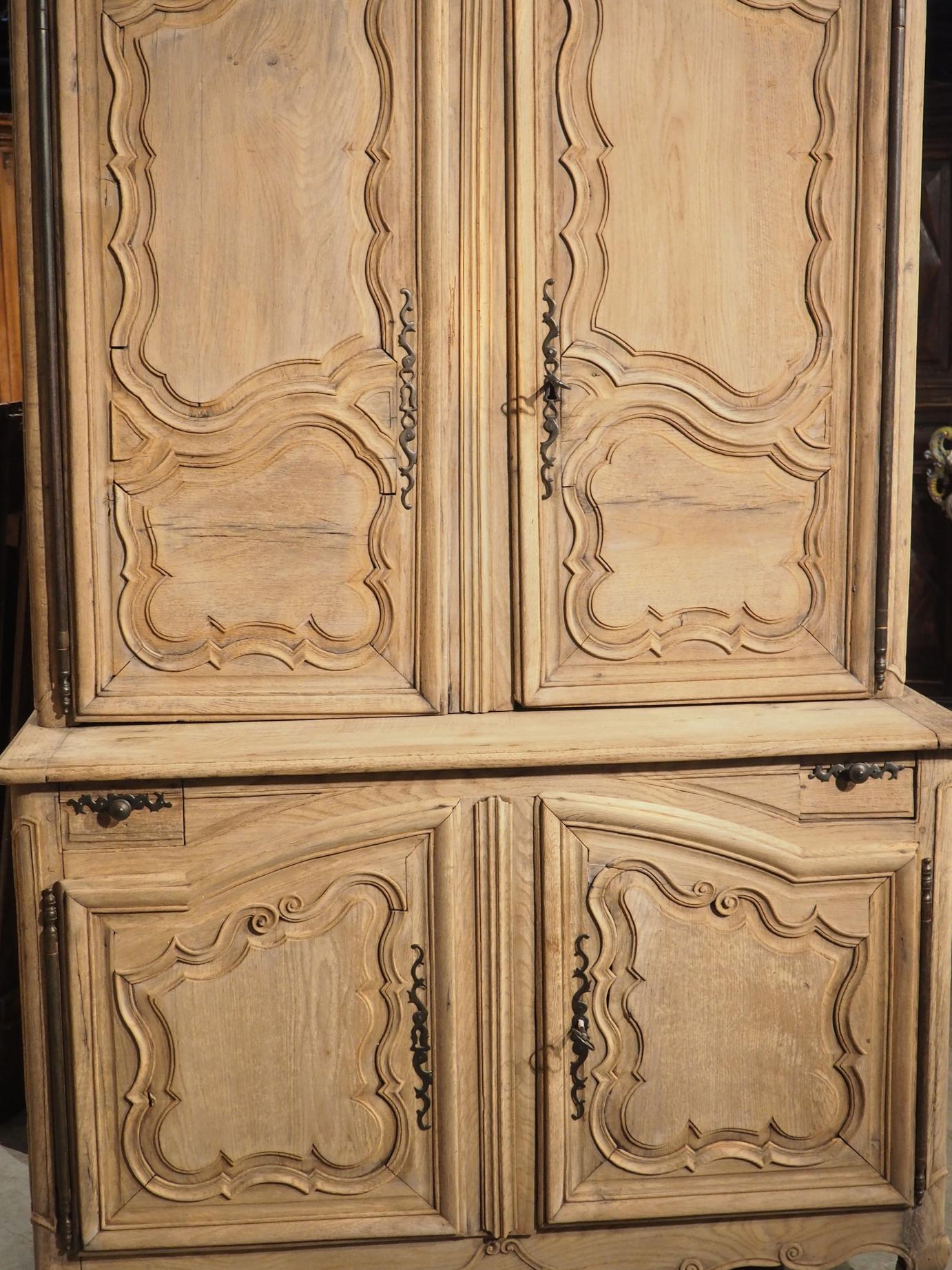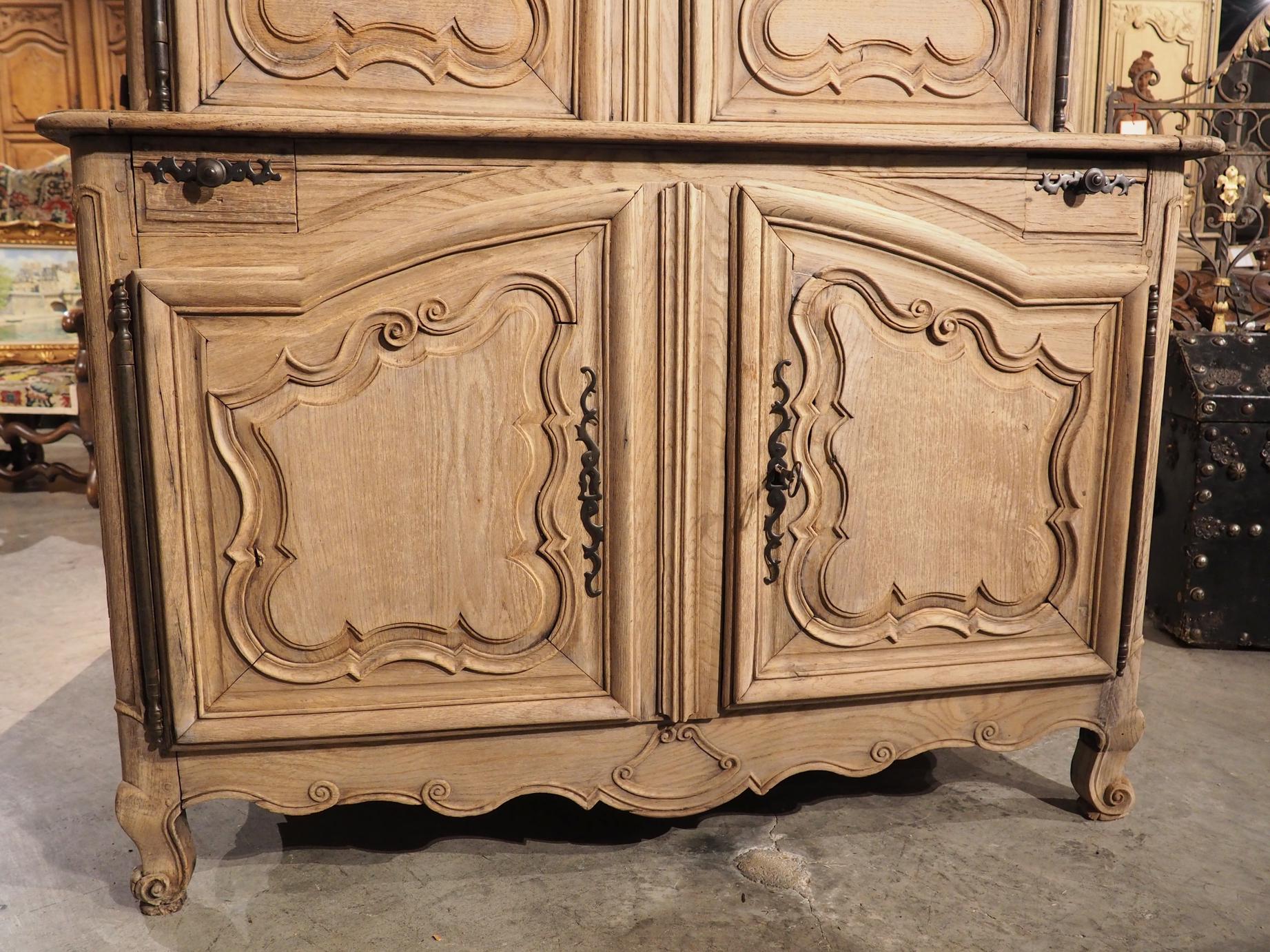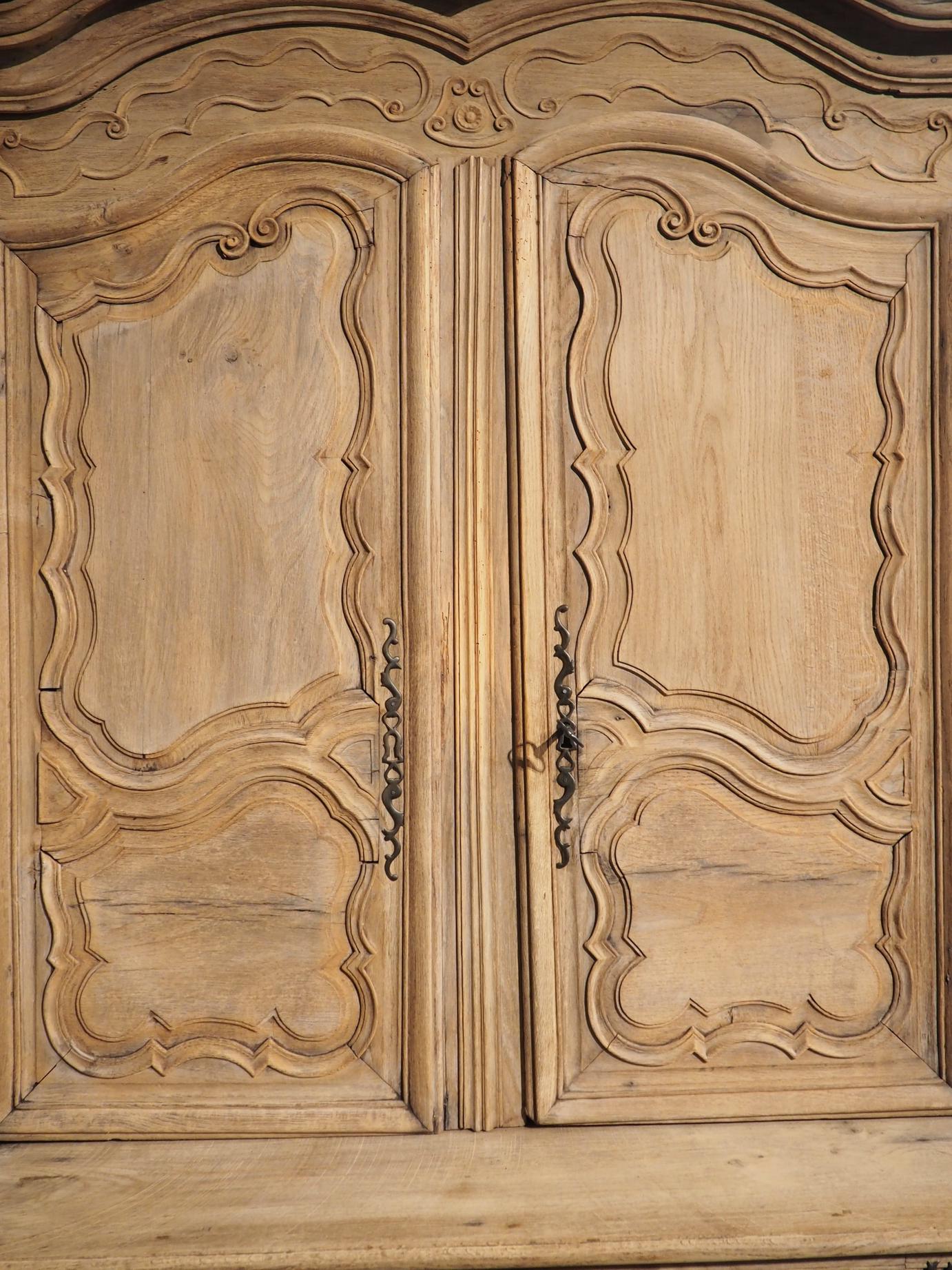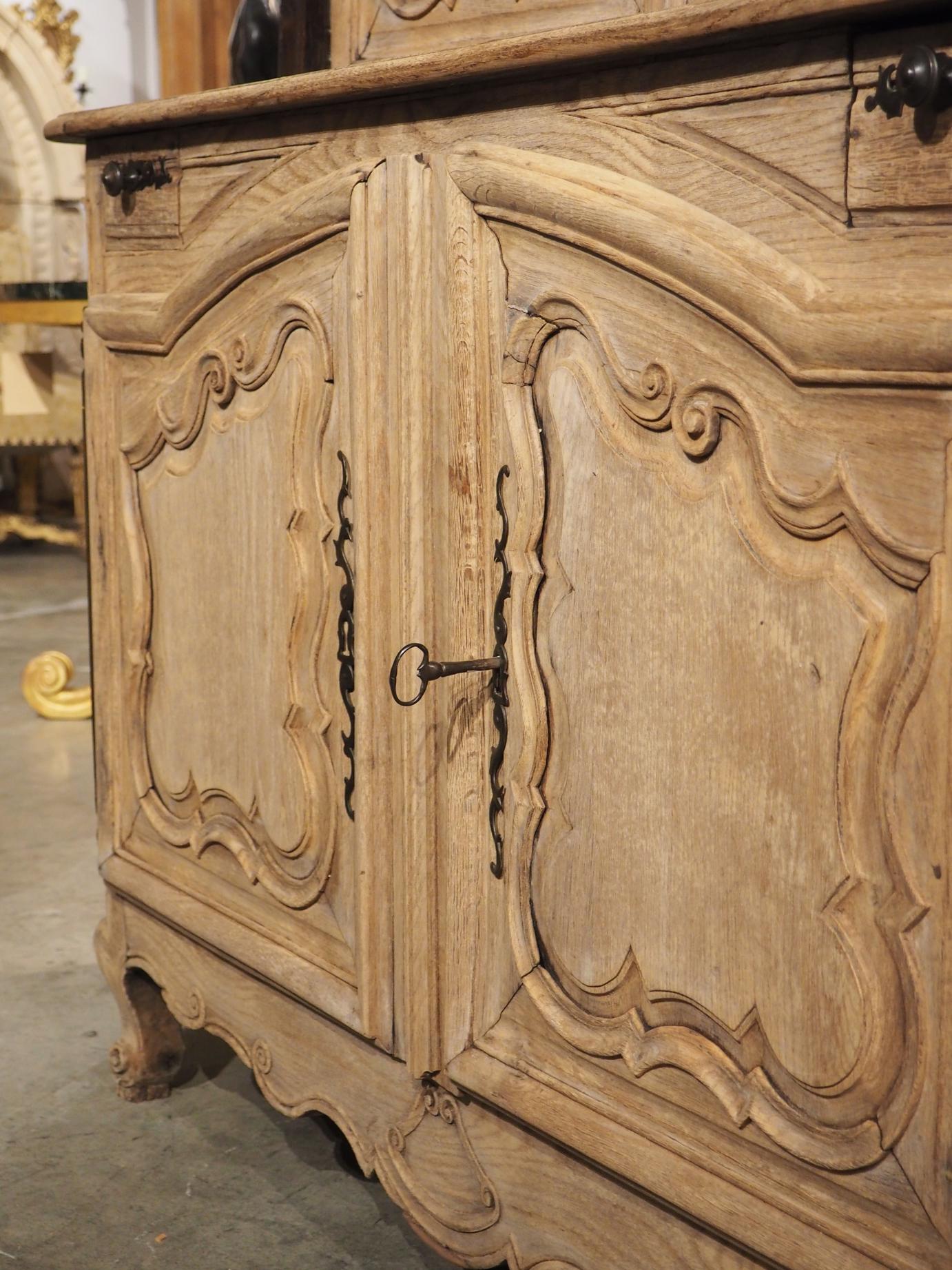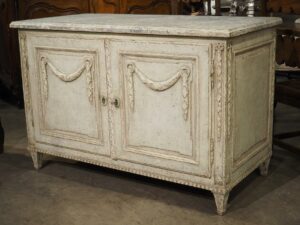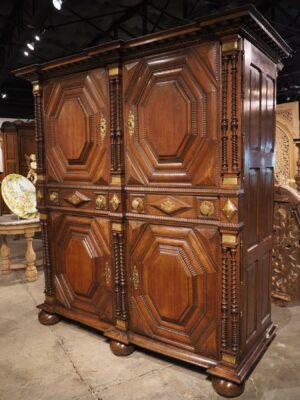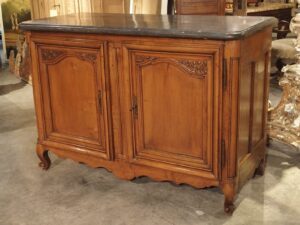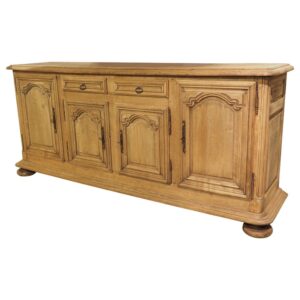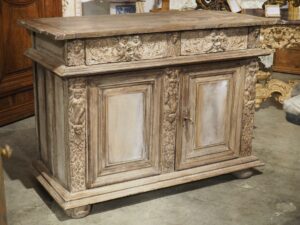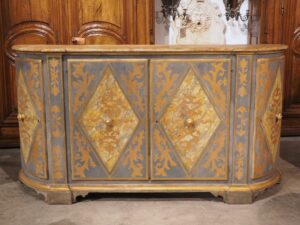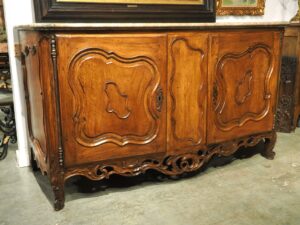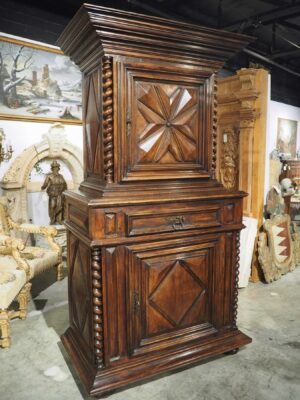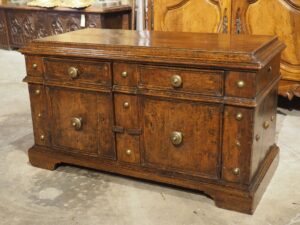Hand-carved in Laval, France, circa 1730, this oak buffet deux corps has been bleached, allowing the motifs of the Louis XV cabinet to gain prominence. Laval is a town less than 200 miles west of Paris and its proximity to the capital allowed local artisans to play an important role during the French Renaissance.
The menuisier that crafted this deux corps (using round dowel construction) did a fantastic job of merging sinuous carvings with the rather linear structure. A large arbalete crown with several layers of thick molding enhances the upper body, adding grace and depth. Although the sides are comprised of rectilinear panels, they do feature undulating aprons, much like the apron of the front façade, which is composed of connected volutes.
Three full-length shelves can be found on the upper body, behind shaped doors that open on iron hinges. A pair of lithe geometric carvings grace the facing between the crown and the doors. The curvaceousness is magnified by ornately carved panels that form the doors. Similarly carved panels can be seen on the lower body (which has just one full-length shelf), although these doors have a less pronounced shape, with only a slight curve at the top of each door. Two narrow knife drawers with round iron pulls have been carved between the doors and the quarter round edge at the top of the lower body. Small, yet thick cabriole legs with volute feet provide a low profile to the handsome bleached oak buffet deux corps. Originally used to store serving pieces in a dining room, the cabinet can also be used in a kitchen or living space.
CONDITION: Good strong antique condition with light age separations and evidence of old wood worm. The wood has been bleached, but traces of the finish remain. Rubs to top of the lower body from the upper doors opening, which is commensurate to use. Minor losses to feet. Functioning locks with one key for each section.


